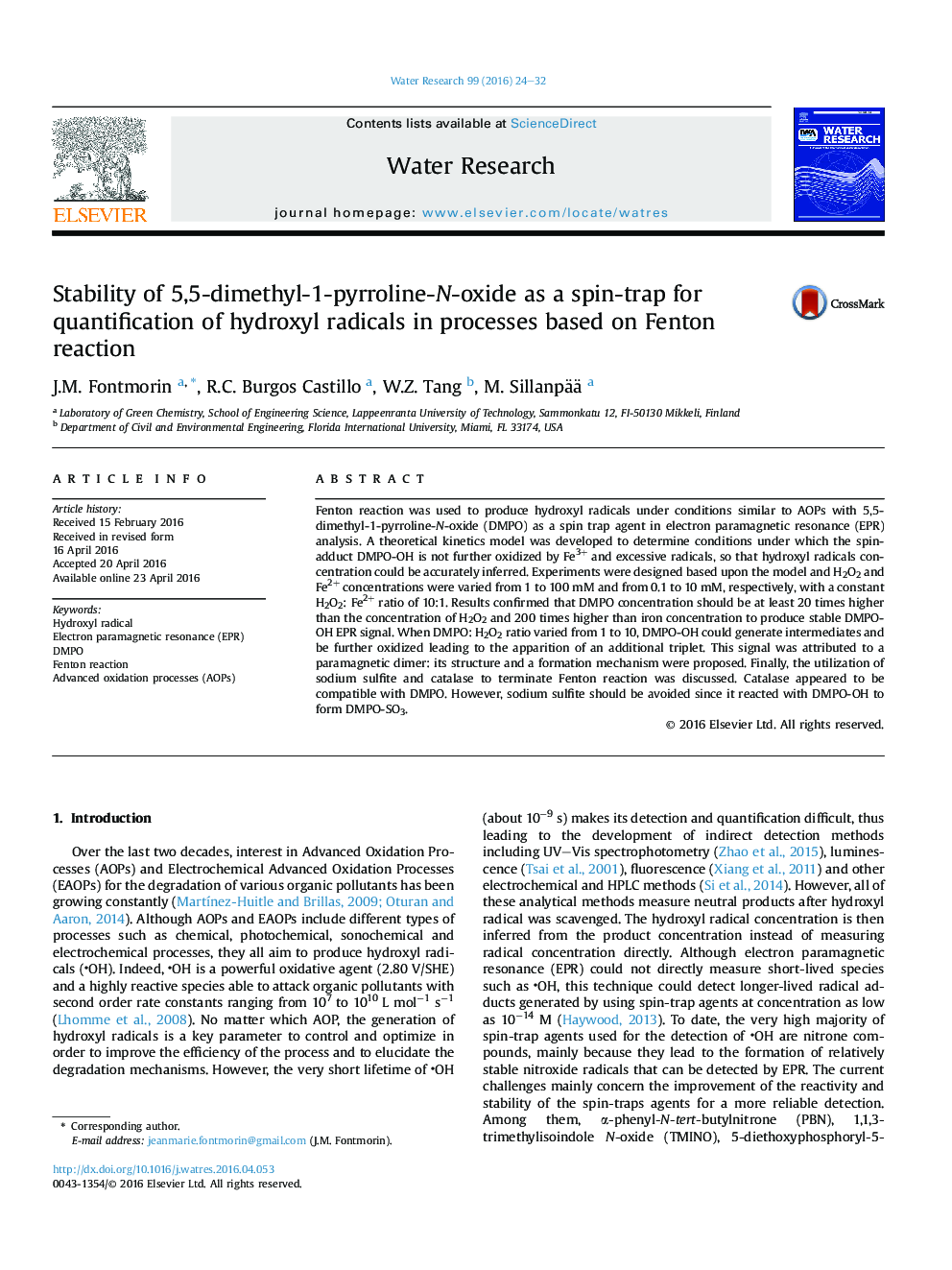| کد مقاله | کد نشریه | سال انتشار | مقاله انگلیسی | نسخه تمام متن |
|---|---|---|---|---|
| 6364937 | 1623069 | 2016 | 9 صفحه PDF | دانلود رایگان |

- Concentrations in Fenton reagent similar to AOPs/EAOPs were used.
- A theoretical model was developed and experiments were based on this model.
- [DMPO] should be respectively 20 and 200 times higher than [H2O2] and [Fe2+].
- When Fenton reagent is in excess, DMPO-OH is degraded into a paramagnetic dimer.
- Utilization of catalase as a H2O2 quencher is compatible with DMPO as a spin trap.
Fenton reaction was used to produce hydroxyl radicals under conditions similar to AOPs with 5,5-dimethyl-1-pyrroline-N-oxide (DMPO) as a spin trap agent in electron paramagnetic resonance (EPR) analysis. A theoretical kinetics model was developed to determine conditions under which the spin-adduct DMPO-OH is not further oxidized by Fe3+ and excessive radicals, so that hydroxyl radicals concentration could be accurately inferred. Experiments were designed based upon the model and H2O2 and Fe2+ concentrations were varied from 1 to 100Â mM and from 0.1 to 10Â mM, respectively, with a constant H2O2: Fe2+ ratio of 10:1. Results confirmed that DMPO concentration should be at least 20 times higher than the concentration of H2O2 and 200 times higher than iron concentration to produce stable DMPO-OH EPR signal. When DMPO: H2O2 ratio varied from 1 to 10, DMPO-OH could generate intermediates and be further oxidized leading to the apparition of an additional triplet. This signal was attributed to a paramagnetic dimer: its structure and a formation mechanism were proposed. Finally, the utilization of sodium sulfite and catalase to terminate Fenton reaction was discussed. Catalase appeared to be compatible with DMPO. However, sodium sulfite should be avoided since it reacted with DMPO-OH to form DMPO-SO3.
96
Journal: Water Research - Volume 99, 1 August 2016, Pages 24-32